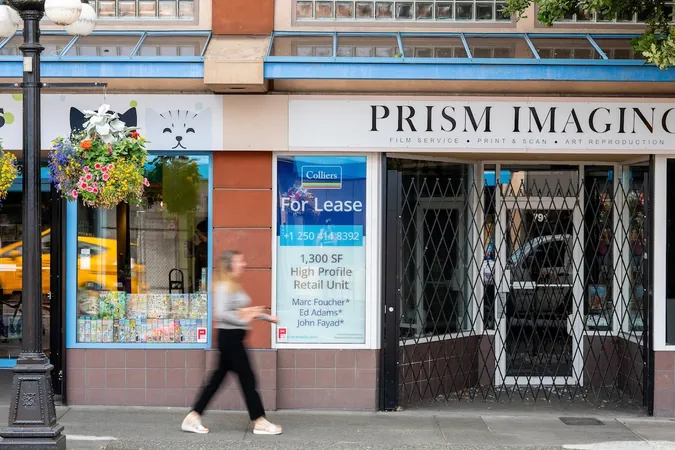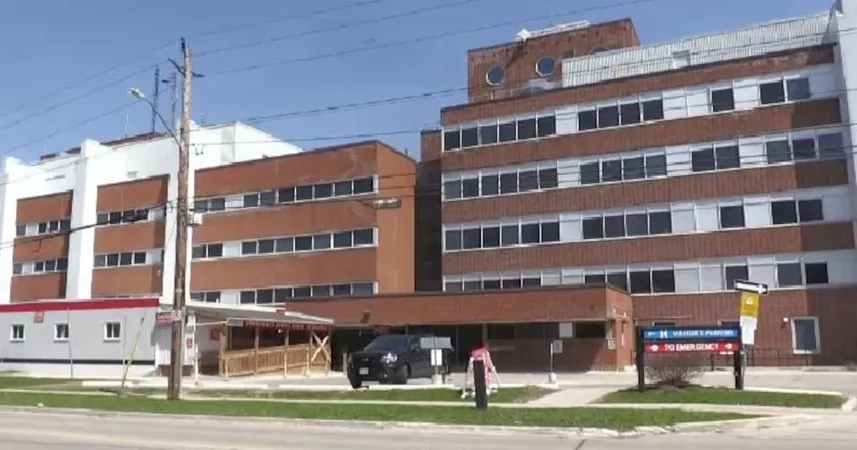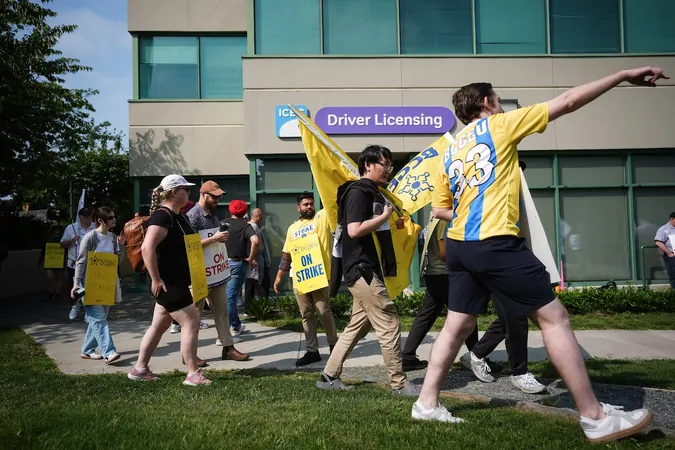
B.C. Government Workers Defy Return-to-Office Pressure: A New Era of Flexibility?
2025-09-08
Author: Liam
The Silence of the Streets: A Pandemic Legacy
When the pandemic forced a lockdown in March 2020, Canada's bustling city streets fell silent, signaling a drastic shift. Fast forward five years, British Columbia's capital, Victoria, remains a shadow of its former self, with low foot traffic despite a return of tourists.
B.C. government takes a stand against the trend
While the private sector and many public institutions across Canada are championing a return to the office for enhanced productivity, B.C. is making a bold move in the opposite direction. Embracing flexible work arrangements, the provincial government is not just allowing but promoting remote work, a stark contrast to the rest of the nation.
Additionally, the BC General Employees’ Union is intensifying its strike action, expanding protests across ten communities, pushing for increased wages and the formal recognition of remote work in future contracts.
Public Sector Pushback: A National Trend?
Across Canada, mandates are rolling out to bring workers back into physical offices. Ontario's government has announced a requirement for employees to be in the office four days a week starting October 20, escalating to full-time by 2026. Meanwhile, Nova Scotia recently summoned 3,500 non-union workers back to the office five days a week.
Remote Work: A Lifeline for the B.C. Public Service
In the ongoing flexibility saga, about one-fifth of British Columbia's 27,000 civil servants are working remotely full-time. This initiative has proved so appealing that even senior managers are relocating away from the high costs of downtown living. An estimated two-thirds of government employees now have agreements in place that permit part-time remote work.
Challenges Ahead: Victoria’s Struggle for Survival
Victoria's recovery has been hampered by issues like the toxic drug crisis and diminished pedestrian activity, leading to closed storefronts and vacant spaces. Iconic businesses, such as Price’s Lock & Safe, have relocated due to a shrinking customer base and escalating concerns over safety.
A New Human Resources Strategy
In light of these challenges, Shannon Salter, head of the public service, has introduced a forward-thinking human resources plan advocating for hybrid work options. Salter argues this model enhances public service delivery while reducing operational costs, ultimately forging a more satisfied workforce.
Economic Ripple Effects on Local Businesses
However, the shift toward remote work is creating turmoil for small and medium-sized businesses reliant on government employees for foot traffic. Many shop owners, who hung on during the pandemic expecting a return of customers, are now reassessing their futures in a hollowed-out downtown. As John Wilson from the Greater Victoria Chamber of Commerce noted, the vibrancy of the area has yet to rebound.
The Union's Response: Fight for Protections
The BC General Employees’ Union has raised concerns about securing remote work as a right in labor contracts, aiming to safeguard the future of workers who have adapted to the new flexible landscape. Union president Paul Finch emphasizes the necessity of protections for those who face potential rollout reversals.
Hope on the Horizon for Downtown Victoria?
As landlords scramble to fill vacant spaces, a recent report highlights the resilience of the downtown office market, suggesting that flexibility in lease terms might be the key to attracting tenants.
Conclusion: Collaborating for a Vibrant Future
While the push for in-person work increases across the private sector, the Greater Victoria Chamber of Commerce is staying put for now, advocating for initiatives to revive the downtown core. It’ll be interesting to see whether public sector policies will evolve to bolster the local economy alongside the thriving private sector.









 Brasil (PT)
Brasil (PT)
 Canada (EN)
Canada (EN)
 Chile (ES)
Chile (ES)
 Česko (CS)
Česko (CS)
 대한민국 (KO)
대한민국 (KO)
 España (ES)
España (ES)
 France (FR)
France (FR)
 Hong Kong (EN)
Hong Kong (EN)
 Italia (IT)
Italia (IT)
 日本 (JA)
日本 (JA)
 Magyarország (HU)
Magyarország (HU)
 Norge (NO)
Norge (NO)
 Polska (PL)
Polska (PL)
 Schweiz (DE)
Schweiz (DE)
 Singapore (EN)
Singapore (EN)
 Sverige (SV)
Sverige (SV)
 Suomi (FI)
Suomi (FI)
 Türkiye (TR)
Türkiye (TR)
 الإمارات العربية المتحدة (AR)
الإمارات العربية المتحدة (AR)